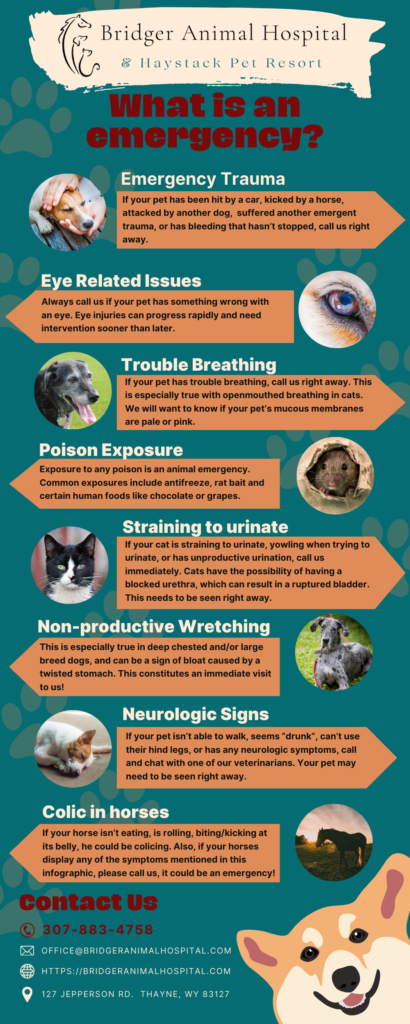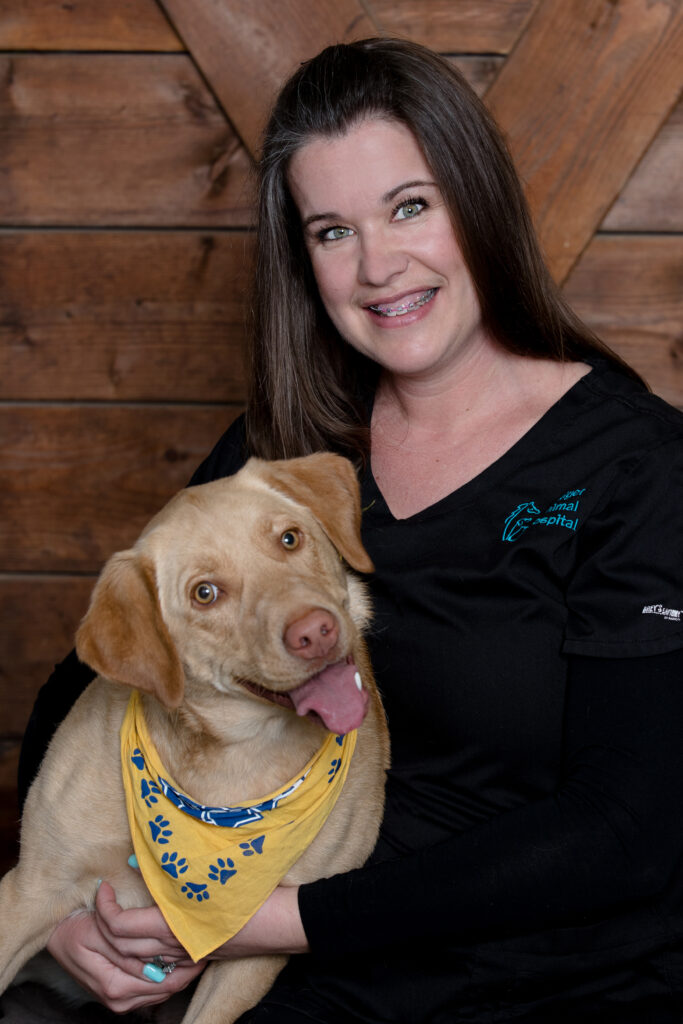What is an emergency?

Author: Maggie McCaslin, CVBL, Practice Manager
At Bridger Animal Hospital, we are thankful to be able to provide after hour services to our community. We often try to put ourselves in our client’s shoes in order to provide the best possible veterinary services we can. And when we consider what we would want when our own pets experience an emergency, we would want our daily veterinarians to be our after hour veterinarian, too.
Our community poses a challenge with emergency veterinary medicine. Star Valley is growing at a rapid rate, yet we still have the same number of veterinary hospitals that we did 20 years ago. We have added doctors, technicians and receptionists to our hospital in order to better serve our community, however we still find ourselves short staffed in comparison to the needs of our growing valley.
We feel like it would be helpful to discuss what constitutes a situation worthy of an emergency visit. We often receive calls after hours for non-emergent cases, and while we are so happy to be available for our clients, it can also be exhausting if we are fielding non-emergent calls with the true emergencies that require our full attention.
Here is a handy infographic that answers the question: What is an Emergency?

What Can Wait?
We know all too well how stressful it can be when our pets are sick. The added stress can make it challenging to discern whether a situation is an emergency or not. The following list contains some examples of non-emergent cases where waiting until regular business hours would be safe:
- Recent onset of diarrhea, and your pet is still eating and drinking fine, without any lethargy.
- Some vomiting that isn’t severe, and your pet has had water within 24 hours and held it down, without any lethargy.
- Ear infections
- Broken toenails
- Nail trims and/or anal gland expressions
- Skin rashes, hot spots, or parasites like fleas or ticks
- Reverse sneezing
- Limping
- Recent onset of anorexia (not eating)
- General malaise
Our staff reserves spots in our daily schedule for urgent care exams such as these and we can see these patients in those time slots.
In the event that we are full with scheduled and emergent cases, we may need to refer you to an emergency hospital in Idaho Falls. This is always our last resort, and when we opt for this decision, it is not done so lightly, and is always in the best interest of your pet. Our main concern is always the safety and health of your pet, and if we are unable to provide services that accomplish that for any reason, we will always work our hardest to give you a referral to an emergency hospital. We will still be with you every step of the way!
This blog is presented to you by Maggie McCaslin, Certified Veterinary Business Leader and practice manager at Bridger Animal Hospital. If you have any questions regarding anything in this article, please reach out to us.

